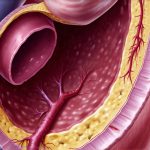Smoking remains a pervasive public health challenge globally, impacting nearly every organ system in the body. While its well-documented effects on the lungs, cardiovascular system, and cancer risk are widely known, the subtle yet significant damage it inflicts upon the liver and gallbladder often receives less attention. This is particularly concerning given the vital roles these organs play in digestion, detoxification, and overall metabolic health. Understanding how smoking interacts with liver and gallbladder function isn’t simply about recognizing another negative consequence of tobacco use; it’s about appreciating a complex interplay that can accelerate disease progression and diminish quality of life.
The liver, as the body’s primary detoxifying organ, constantly filters toxins from the bloodstream, including those introduced through smoking – thousands of chemicals with each puff. The gallbladder, responsible for storing bile produced by the liver, aids in the digestion of fats. Smoking doesn’t just introduce new toxins; it alters how the liver processes existing ones and disrupts the delicate balance within the digestive system. These effects can range from mild functional impairment to severe chronic conditions like cirrhosis and gallstone formation. The cumulative impact over years of smoking is substantial and deserves careful consideration, especially as lifestyle factors increasingly influence health outcomes.
Liver Dysfunction & Smoking
The link between smoking and liver dysfunction isn’t a new discovery, but the mechanisms involved are becoming clearer through ongoing research. Smoking introduces a heavy toxic load that overwhelms the liver’s natural detoxification processes. This leads to increased oxidative stress – an imbalance between free radicals and antioxidants – resulting in cellular damage. Furthermore, nicotine and other chemicals present in cigarette smoke directly interfere with liver cell function and regeneration. The liver is remarkably resilient, capable of repairing itself, but chronic exposure to these toxins gradually diminishes its capacity to do so.
Smoking demonstrably increases the risk of developing non-alcoholic fatty liver disease (NAFLD), a condition characterized by fat accumulation in the liver even without significant alcohol consumption. This is particularly concerning because NAFLD often progresses silently, potentially leading to more serious conditions like non-alcoholic steatohepatitis (NASH) – an inflammatory form of NAFLD – and eventually cirrhosis. Studies show smokers are significantly more likely to have elevated liver enzymes, indicating liver cell damage, compared to non-smokers. This elevation isn’t necessarily indicative of a specific disease but serves as an early warning sign of potential problems.
Beyond NAFLD, smoking exacerbates existing liver diseases like hepatitis B and C. It accelerates the progression of fibrosis (scarring) in these patients, increasing their risk of cirrhosis and hepatocellular carcinoma (liver cancer). The combination of viral infection and smoking creates a synergistic effect, meaning the damage is far greater than the sum of its parts. This emphasizes that individuals with chronic hepatitis should absolutely avoid smoking to protect their liver health.
Mechanisms of Liver Damage
Understanding how smoking damages the liver requires delving into specific mechanisms:
- Increased Oxidative Stress: Cigarette smoke contains a high concentration of free radicals, leading to oxidative stress and cellular damage within the liver. Antioxidant defenses are overwhelmed, accelerating the aging process of liver cells.
- Inflammation: Chronic exposure to cigarette smoke triggers chronic inflammation in the liver. This sustained inflammatory response contributes to fibrosis and ultimately cirrhosis. The body’s immune system is constantly battling the toxins, leading to collateral damage.
- Altered Lipid Metabolism: Smoking disrupts lipid metabolism, promoting fat accumulation in the liver (NAFLD). It also impacts how the liver processes cholesterol, potentially increasing risk of cardiovascular complications alongside liver disease.
The impact on hepatic stellate cells – key players in liver fibrosis – is particularly significant. Smoking activates these cells, causing them to produce excessive amounts of collagen, leading to scarring and impairing liver function. This activation isn’t reversible easily, even with smoking cessation, highlighting the long-term consequences. Research suggests that certain compounds within cigarette smoke can directly stimulate stellate cell activity, accelerating fibrogenesis.
Impact on Liver Detoxification Pathways
The liver’s detoxification pathways are crucial for eliminating harmful substances from the body. Smoking significantly impairs these pathways, making it harder for the liver to function effectively. Specifically, smoking reduces the levels of glutathione, a vital antioxidant and detoxifying agent used by the liver. Reduced glutathione levels diminish the liver’s ability to neutralize toxins, leading to increased oxidative stress and cellular damage.
Furthermore, smoking alters the activity of cytochrome P450 enzymes – a family of enzymes responsible for metabolizing drugs and toxins. While some enzymes are induced (increased in activity) by cigarette smoke, others are inhibited (decreased in activity). This disruption can lead to altered drug metabolism, potentially increasing or decreasing the effectiveness of medications and creating unpredictable interactions. It also means that toxins remain in the body longer, exacerbating liver damage.
Smoking Cessation & Liver Health
The good news is that some degree of liver recovery is possible with smoking cessation. While long-standing damage may not be fully reversed, stopping smoking significantly reduces the burden on the liver and allows it to begin repairing itself. Studies have shown that quitting smoking can lead to improvements in liver enzyme levels and a reduction in inflammation.
The benefits of cessation are particularly pronounced in individuals with NAFLD or chronic hepatitis. Quitting smoking slows down disease progression, reducing the risk of cirrhosis and liver cancer. It’s important to remember that:
1. Early intervention is key – the sooner someone quits, the better the outcome.
2. Support systems (therapy, support groups) can significantly increase success rates.
3. Addressing underlying addiction challenges is crucial for long-term abstinence.
The effects of smoking on the gallbladder are often overshadowed by its impact on the liver, but they are nonetheless significant. Smoking alters bile acid metabolism, increases cholesterol saturation in bile, and impairs gallbladder motility – all factors that contribute to gallstone formation. Gallstones can cause excruciating pain, blockages, and inflammation (cholecystitis) requiring surgical intervention. Studies consistently demonstrate a higher incidence of gallstone disease among smokers compared to non-smokers. The risk is further elevated for women who smoke and are taking estrogen-containing medications.
The precise mechanisms linking smoking and gallbladder problems are still being investigated, but several factors appear to play a role. Smoking increases the production of cholesterol in the liver, which is then excreted into bile. Simultaneously, it reduces the levels of bile acids – substances that help dissolve cholesterol. This imbalance leads to supersaturation of bile with cholesterol, increasing the likelihood of crystal formation and subsequent gallstone development. Additionally, smoking impairs gallbladder emptying, allowing bile to stagnate and further promote stone formation.
Smoking also exacerbates inflammation in the biliary system (the network of ducts connecting the liver, gallbladder, and small intestine). Chronic inflammation contributes to cholecystitis and can eventually lead to chronic pancreatitis if stones obstruct the pancreatic duct. This highlights the interconnectedness of these digestive organs and how smoking can disrupt their harmonious function.
It is crucial to remember that this information provides a general overview and should not be interpreted as medical advice. If you are concerned about your liver or gallbladder health, please consult with a qualified healthcare professional for personalized evaluation and guidance.


















